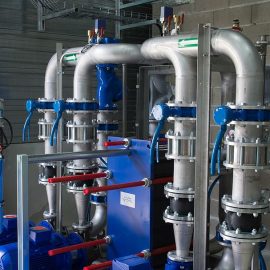
The sleeve is available in all materials commonly used in plumbing, especially copper or PE, which are widely used for water and gas pipes.
The plumbing sleeve: what is it? What are the advantages and disadvantages of the different plumbing sleeves? That’s what you will find out in this post.
What is a plumbing sleeve?
Whether a plumbing sleeve or a fitting, the plumbing sleeve connects two pipes, hoses, or piping systems with or without soldering or brazing.
The sleeve makes it possible to do without or to make reliable direct welding and brazing operations which are quite difficult to master.
Therefore, the plumbing sleeve is a watertight connection that allows one to link two or more pipes to allow everyone to install a plumbing system.
Plumbing sleeve: different configurations

The sleeve comes in several versions and names to meet the different configurations of plumbing connections.
Depending on the shape, the layout, and the number of pipes to be connected:
– The straight sleeve is a simple fitting that connects two perfectly aligned pipes.
– The bent sleeve is used to connect two pipes that are at an angle. There are 45°, 60° and 90° bends.
– The flexible sleeve allows the connection of two tubes with an offset or an unconventional angle between them.
– The T-sleeve allows connecting 3 tubes, two perfectly aligned and the third at 90°.
Good to know: there are ‘rotating’ couplings that allow the two tubes to be connected to keep a rotation amplitude without affecting the strength or the tightness of the assembly.
Couplings according to the diameter (internal or external) of the heads of the tubes to be connected:
– The equal sleeve where each end of the sleeve has the same diameter.
– The reduced sleeve on which the two ends have different diameters.
The type of assembly with or without brazing:
– Solder (copper) or glue (PVC) sleeves are made of the same or similar material as the pipes they are connecting.
– Screw-in sockets are generally made of copper. The sealing of the thread is then realized either by wire or Teflon or using a crush seal. They have the advantage of being the least expensive and the disadvantage of requiring a minimum of know-how, particularly in producing the beaten collars.
– Olive sleeves where a soft copper ring (the olive) is crushed by screwing between two bicones to make the seal. They are easy and quick to install but do not stand up well to dismantling without replacing the parts.
– Mixed seal sleeves with rubber seals held in place by a stainless steel washer. Disassembly is possible without replacement parts, but they are quickly expensive for complete installations.
Plumbing: which sleeve for which tube?
In addition to the type of assembly to be made (straight, bent, flexible, T-bend…), the type of tube material and the type of installation (soldering or not) dictate the choice of sleeves to be installed.
– On copper pipes: with brazing: braze-on copper sleeves and without brazing: olive bicone sleeves, jointed sleeves, cleavable sleeves.
– On PE pipes: clip-on sleeves with compression (without tools) or sliding (with specific pliers).
– On PVC and CPVC (over-chlorinated PVC) pipes: glue-on or crimp-on sleeves.
Good to know: the screw-in sleeve requires the pipes to be “flared” to ensure the sealing plane and maintain the screw-in nut.
Pay attention to the denomination of copper pipes. A distinction is made between annealed copper, which is flexible, delivered in coils, and intended to be placed in a casing, and hardened copper, which is rigid, supplied in bars and intended for visible assemblies.



